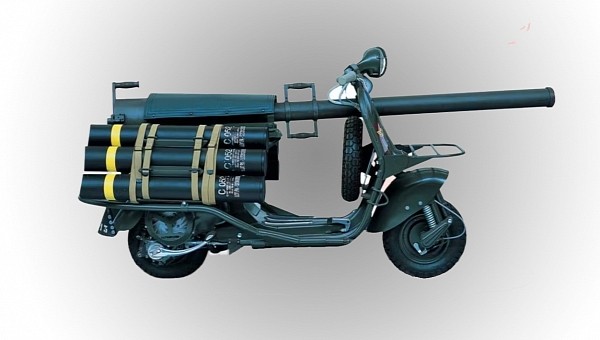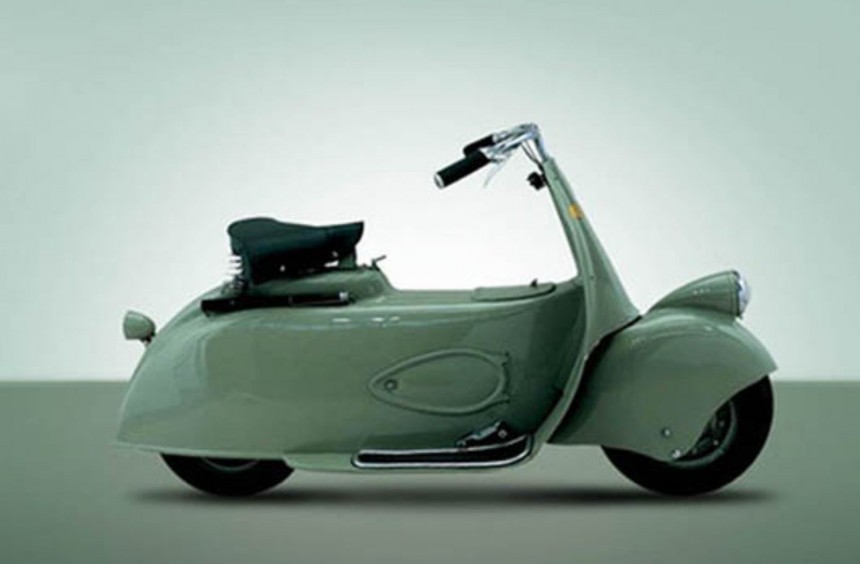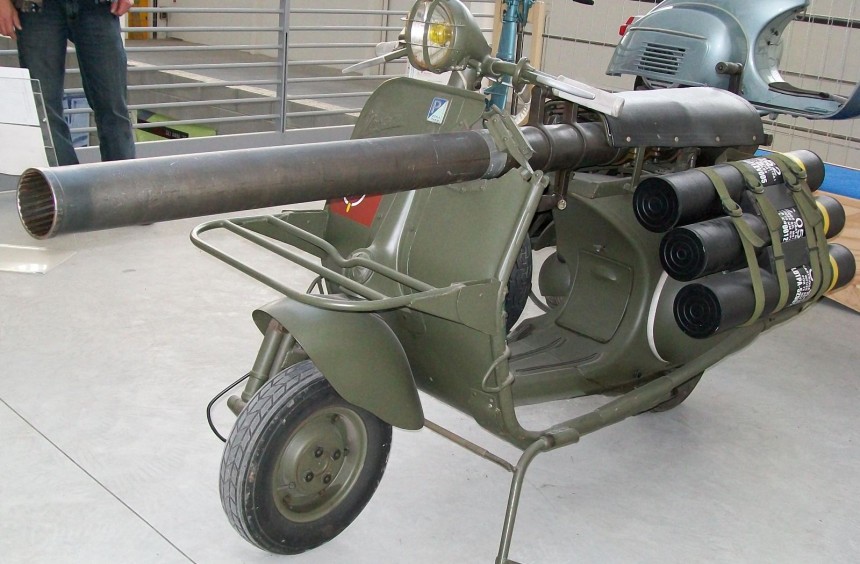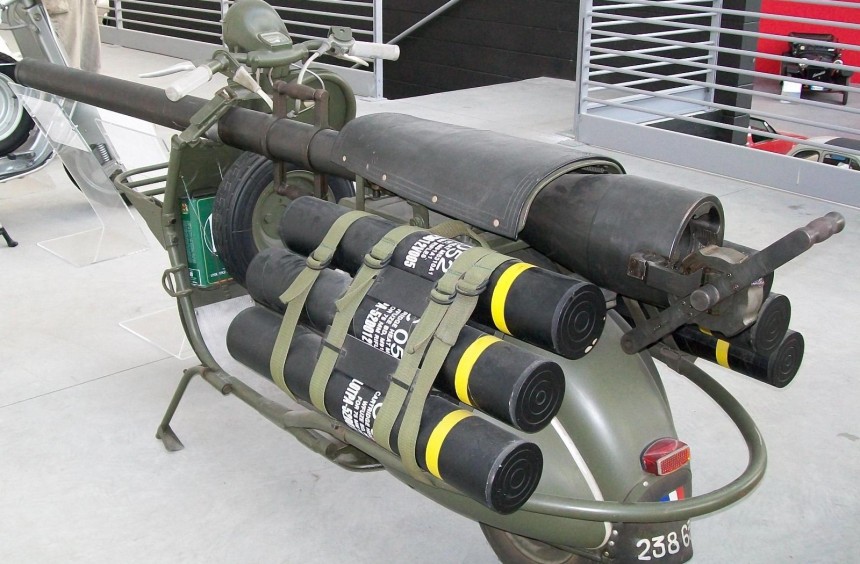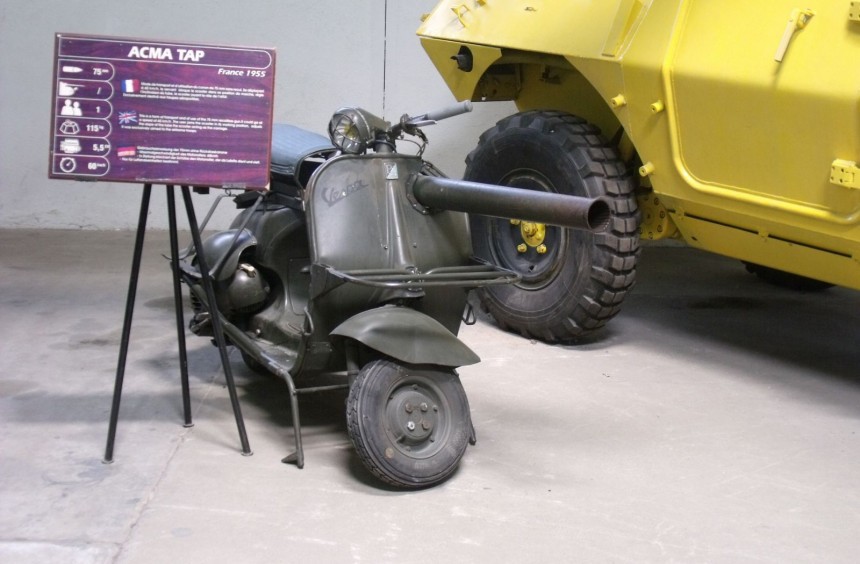It might seem like a joke. But this anti-tank scooter was real. Build by the French military during the 1950s, it was conceived to be parachute-dropped to the battlefield where it was capable of disabling armored vehicles.
Today, Vespa is the world’s most popular brand of scooters and mopeds. Its story started shortly after the Second World War when crippled manufacturer Piaggio decided to reinvent itself by producing cheap means of transportation.
Founded by Rinaldo Piaggio in 1884, the company started by making locomotives and railway carriages. By the 1940s, it grew into one of Italy’s biggest manufacturers, adding vehicles like airplanes, trucks, trams, and buses to its resume.
But, Italy’s decision to join the Axis powers during Second World War and Piaggio's involvement in the war effort spelled disaster for the company. Its main plant located in Pontedera, Tuscany, was destroyed by the Allies, who ended up victorious.
With Rinaldo passing away in 1938, Piaggio was passed down to his sons Armando and Enrico. The latter didn’t give up on the family business, and as the global conflict was drawing to an end, he decided to diversify the company’s activities, mainly looking to address the country’s need for affordable, mass-produced vehicles.
With Italy’s road network in ruins, he turned his attention to motorcycles. By 1944, Piaggio engineers Renzo Spolti and Vittorio Casini put together a prototype officially called MP5 (Moto Piaggio no. 5). However, Enrico was displeased with the result, particularly its tall central section, which he deemed uncomfortable, so he commissioned aeronautical engineer Corradino D'Ascanio to redesign it.
D'Ascanio reworked the frame, moved the engine to the rear, and built the first version of what was to become the world’s most popular scooter. When he first saw the new two-wheeler codenamed MP6, Enrico Piaggio allegedly exclaimed "Sembra una vespa!" ("It looks like a wasp!"), which ended up inspiring the vehicle’s official name.
Piaggio kicked off production of the original Vespa in 1946. The first units sold slowly. But after the company introduced the option of paying by installments, sales began to explode. By 1950, tens of thousands were sold across the country. Less than a decade later, it became a global sensation.
Apart from selling Vespas through their ever-growing dealership network, Piaggio licensed the design to several independent manufacturers because they were struggling to keep up with demand. One of these manufacturers was Ateliers de Construction de Motocycles et Automobiles (ACMA) from France, which would go on to build arguably the most outrageous version of the famed scooter.
Based on the VBT1, the civilian model equipped with a 150-cc, two-stroke engine that enabled a top speed of 37 mph (60 kph), ACMA designed a special military version for the French paratroops (troupes aéroportées or TAP), who were looking for a light and relatively cheap gun-carrying vehicle that they could parachute along with the troops.
Called 150 TAP, the military scooter was designed to carry a U.S.-made M20, 75-mm rifle, a type of recoilless, light anti-armor weapon able to penetrate up to 100 mm of armor when firing a HEAT warhead.
The M20’s recoil was eliminated by the use of venting propellant gases, which were pushed out the rear end of the rifle, eliminating the need for a complex mechanical recoil system or a heavy mount. This meant that the scooter didn’t have to receive intricate modifications to carry the M20, and even more important, its weight didn’t increase by much, so it could be easily parachuted.
The troops would drop the Vespas in pairs, along with a two-man team. One of the scooters carried the rifle and its mount, while the second was loaded with ammo. At the time, there was no aiming device available for the M20, so soldiers would dismount the rifle from the scooter and fire it using its ground-mounted tripod. However, ACMA stated that, in theory, the M20 could be fired while mounted on the Vespa in case of an emergency, even when the scooter was moving. But the accuracy of the shot would be greatly impacted.
Apart from a strengthened frame and a lower gear ratio, the 150 TAP was not much different from the civilian version. It was manufactured in about 600 examples during two production runs. The first units were built from 1956 to 1958, while slightly upgraded versions were assembled in 1959.
In Italy, Piaggio developed its own military version of the scooter called Vespa Force Armate as early as 1949. It was considered superior to conventional military motorcycles thanks to better maneuverability, lighter weight, improved fuel consumption, and increased reliability.
The prototype was designed with a multitude of options, including an armored leg shield, a saddle-mounted radio, or a submachine-gun mount fitted on the handlebar. It was extensively tested by the Italian military and later by NATO forces, but after two years of negotiations, Piaggio shelved the project since the offers it received were unacceptable.
Still, thanks to French licensee ACMA, the Vespa was eventually enrolled in the French army, where in bazooka-carrying, 150 TAP guise, it became the most outrageous scooter ever built.
You can take a virtual tour of this awesome machine in the YouTube video below by Pietro Pecco.
Founded by Rinaldo Piaggio in 1884, the company started by making locomotives and railway carriages. By the 1940s, it grew into one of Italy’s biggest manufacturers, adding vehicles like airplanes, trucks, trams, and buses to its resume.
But, Italy’s decision to join the Axis powers during Second World War and Piaggio's involvement in the war effort spelled disaster for the company. Its main plant located in Pontedera, Tuscany, was destroyed by the Allies, who ended up victorious.
How the Vespa was born
With Italy’s road network in ruins, he turned his attention to motorcycles. By 1944, Piaggio engineers Renzo Spolti and Vittorio Casini put together a prototype officially called MP5 (Moto Piaggio no. 5). However, Enrico was displeased with the result, particularly its tall central section, which he deemed uncomfortable, so he commissioned aeronautical engineer Corradino D'Ascanio to redesign it.
D'Ascanio reworked the frame, moved the engine to the rear, and built the first version of what was to become the world’s most popular scooter. When he first saw the new two-wheeler codenamed MP6, Enrico Piaggio allegedly exclaimed "Sembra una vespa!" ("It looks like a wasp!"), which ended up inspiring the vehicle’s official name.
From popular civilian scooter to bazooka-equipped military vehicle
Apart from selling Vespas through their ever-growing dealership network, Piaggio licensed the design to several independent manufacturers because they were struggling to keep up with demand. One of these manufacturers was Ateliers de Construction de Motocycles et Automobiles (ACMA) from France, which would go on to build arguably the most outrageous version of the famed scooter.
Based on the VBT1, the civilian model equipped with a 150-cc, two-stroke engine that enabled a top speed of 37 mph (60 kph), ACMA designed a special military version for the French paratroops (troupes aéroportées or TAP), who were looking for a light and relatively cheap gun-carrying vehicle that they could parachute along with the troops.
A simple and effective design
The M20’s recoil was eliminated by the use of venting propellant gases, which were pushed out the rear end of the rifle, eliminating the need for a complex mechanical recoil system or a heavy mount. This meant that the scooter didn’t have to receive intricate modifications to carry the M20, and even more important, its weight didn’t increase by much, so it could be easily parachuted.
The troops would drop the Vespas in pairs, along with a two-man team. One of the scooters carried the rifle and its mount, while the second was loaded with ammo. At the time, there was no aiming device available for the M20, so soldiers would dismount the rifle from the scooter and fire it using its ground-mounted tripod. However, ACMA stated that, in theory, the M20 could be fired while mounted on the Vespa in case of an emergency, even when the scooter was moving. But the accuracy of the shot would be greatly impacted.
Apart from a strengthened frame and a lower gear ratio, the 150 TAP was not much different from the civilian version. It was manufactured in about 600 examples during two production runs. The first units were built from 1956 to 1958, while slightly upgraded versions were assembled in 1959.
It wasn’t the first military Vespa, but it was the most outrageous
The prototype was designed with a multitude of options, including an armored leg shield, a saddle-mounted radio, or a submachine-gun mount fitted on the handlebar. It was extensively tested by the Italian military and later by NATO forces, but after two years of negotiations, Piaggio shelved the project since the offers it received were unacceptable.
Still, thanks to French licensee ACMA, the Vespa was eventually enrolled in the French army, where in bazooka-carrying, 150 TAP guise, it became the most outrageous scooter ever built.
You can take a virtual tour of this awesome machine in the YouTube video below by Pietro Pecco.
